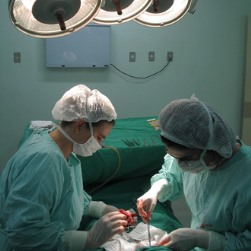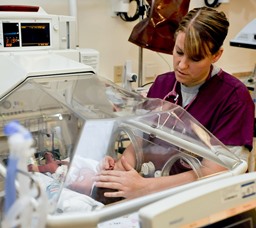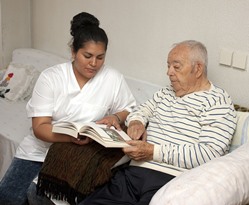How to Choose a Nursing School near Belt Montana
 Choosing the right nursing school near Belt MT may feel like a challenging endeavor, particularly if you have no idea what to search for in a good degree program. As you may presently understand, to practice as a registered nurse, you must acquire the proper education and training to become licensed. So it is vitally important that you research and evaluate the qualifications of each college you are thinking about before enrolling in your ultimate choice. Unfortunately, too many future students base their selection solely on the cost of tuition and the proximity of the school. Going with the least expensive college or the one that is nearest to your home is undoubtedly not the best way to select a nursing program. There are several crucial additional aspects to check out before you determine where to enroll in classes. But before we explore that checklist, let’s first go over what the function of a registered nurse is in our healthcare system, together with the nursing degree choices that are offered.
Choosing the right nursing school near Belt MT may feel like a challenging endeavor, particularly if you have no idea what to search for in a good degree program. As you may presently understand, to practice as a registered nurse, you must acquire the proper education and training to become licensed. So it is vitally important that you research and evaluate the qualifications of each college you are thinking about before enrolling in your ultimate choice. Unfortunately, too many future students base their selection solely on the cost of tuition and the proximity of the school. Going with the least expensive college or the one that is nearest to your home is undoubtedly not the best way to select a nursing program. There are several crucial additional aspects to check out before you determine where to enroll in classes. But before we explore that checklist, let’s first go over what the function of a registered nurse is in our healthcare system, together with the nursing degree choices that are offered.
Registered Nurse Job Activities
 Registered nurses are the largest occupation in the healthcare delivery system. RNs practice in a large number of different medical environments, namely Belt MT hospitals, family practices, outpatient clinics, nursing homes and even schools. Their primary job is to help doctors in the treatment of their patients. However, the specific duties of a registered nurse will be dependent on their job or specialization along with where they work. A portion of the responsibilities of an RN may include:
Registered nurses are the largest occupation in the healthcare delivery system. RNs practice in a large number of different medical environments, namely Belt MT hospitals, family practices, outpatient clinics, nursing homes and even schools. Their primary job is to help doctors in the treatment of their patients. However, the specific duties of a registered nurse will be dependent on their job or specialization along with where they work. A portion of the responsibilities of an RN may include:
- Administering medications
- Overseeing patients
- Performing physical examinations
- Coordinating care
- Supervising LPNs, LVNs and nurse aides
- Educating patients and their families
- Taking care of health records and charts
Nurses with a more advanced degree may have more complex job duties and responsibilities. Nurse practitioners (NP), as an example, must hold a Master’s Degree and generally work more independently than their RN counterparts. They can deliver primary or specialty care services, prescribe medications, and diagnose and treat basic illnesses or injuries.
Nursing Degree Options
There is more than one degree option to choose from to become a registered nurse. And in order to become an RN, a student must enroll in an accredited school and program. A student can acquire a qualifying degree in as little as two years, or continue on to earn a graduate degree for a total of 6 years. Following are some brief summaries of the nursing degrees that are offered in the Belt MT area.
- Associates. The Associate Degree in Nursing (ADN) is usually a 2 year program made available by community colleges. It preps graduates for an entry level job in nursing in medical facilities including hospitals, clinics or nursing homes. Many utilize the ADN as an entry into nursing and afterwards attain a more advanced degree.
- Bachelor’s. The Bachelor of Science in Nursing (BSN) supplies more comprehensive training than the ADN. It is usually a four year program offered at colleges and universities. Licensed RNs may be qualified to complete an accelerated program based on their previous training or degree and professional experience (RN to BSN). Those applying to the program might want to progress to a clinical or administrative position, or be more competitive in the employment market.
- Master’s. The Master of Science in Nursing (MSN) is normally a two year program after receiving the BSN. The MSN program offers specialization training, for instance to become a nurse practitioner or focus on administration, management or teaching.
After a graduating student has acquired one of the above degrees, she or he must pass the National Council Licensure Examination for Registered Nurses (NCLEX-RN) in order to become licensed. Various other requirements for licensing fluctuate from state to state, so make sure to check with the Montana board of nursing for any state requirements.
LVN and LPN Training
 There are generally two scholastic credentials offered that provide education to become either an LPN or an LVN. The one that can be finished in the shortest time frame, commonly about 1 year, is the certificate or diploma course. The second choice is to attain a Practical Nursing Associate Degree. These programs are broader in nature than the diploma option and typically require 2 years to complete. The advantage of Associate Degrees, aside from providing a higher credential and more in-depth training, are that they provide more transferable credit toward a Bachelor’s Degree in nursing. Regardless of the type of credential you pursue, it needs to be Montana approved and accredited by the National League for Nursing Accrediting Commission (NLNAC) or any other national accrediting organization. The NLNAC guarantees that the core curriculum properly prepares students to become Practical Nurses, and that most graduates pass the 50 state required NCLEX-PN licensing exam.
There are generally two scholastic credentials offered that provide education to become either an LPN or an LVN. The one that can be finished in the shortest time frame, commonly about 1 year, is the certificate or diploma course. The second choice is to attain a Practical Nursing Associate Degree. These programs are broader in nature than the diploma option and typically require 2 years to complete. The advantage of Associate Degrees, aside from providing a higher credential and more in-depth training, are that they provide more transferable credit toward a Bachelor’s Degree in nursing. Regardless of the type of credential you pursue, it needs to be Montana approved and accredited by the National League for Nursing Accrediting Commission (NLNAC) or any other national accrediting organization. The NLNAC guarantees that the core curriculum properly prepares students to become Practical Nurses, and that most graduates pass the 50 state required NCLEX-PN licensing exam.
CNA Diplomas
Unlike other licensed nurses, certified nursing assistants do not need to obtain a college degree. CNA instruction can be received at Belt MT area community colleges or at vocational or trade schools. The duration of the instruction can take anywhere from just one to three months, resulting in either a certificate or a diploma. Within the 1987 Nursing Home Reform Act, students are required to receive at least 75 hours of training, 16 of which need to be clinical or “hands-on” training hours. Keep in mind that this is the minimum period of instruction mandated and that each state has its specific requirements. So it’s crucial to make certain that the course you enroll in not only complies with the federal requirements, but likewise those for Montana or the state where you will be practicing. One tip is to check with the health or nursing board for your state to make certain that the training course is state certified. In addition to the training, each state requires a passing score on a competency test for certification. Depending on the state, there might be other prerequisites as well.
Things to Ask Nursing Schools
 Once you have chosen which nursing program to pursue, and if to attend your classes on campus near Belt MT or on the internet, you can utilize the following checklist to begin narrowing down your options. As you no doubt are aware, there are numerous nursing schools and colleges throughout Montana and the United States. So it is essential to lower the number of schools to choose from so that you will have a workable list. As we earlier discussed, the location of the school and the expense of tuition are most likely going to be the first two points that you will look at. But as we also emphasized, they should not be your only qualifiers. So prior to making your final decision, use the following questions to see how your pick measures up to the field.
Once you have chosen which nursing program to pursue, and if to attend your classes on campus near Belt MT or on the internet, you can utilize the following checklist to begin narrowing down your options. As you no doubt are aware, there are numerous nursing schools and colleges throughout Montana and the United States. So it is essential to lower the number of schools to choose from so that you will have a workable list. As we earlier discussed, the location of the school and the expense of tuition are most likely going to be the first two points that you will look at. But as we also emphasized, they should not be your only qualifiers. So prior to making your final decision, use the following questions to see how your pick measures up to the field.
- Accreditation. It’s a good idea to make sure that the degree or certificate program along with the school is accredited by a U.S. Department of Education recognized accrediting agency. Besides helping verify that you receive a premium education, it may assist in acquiring financial aid or student loans, which are oftentimes not offered in Belt MT for non-accredited schools.
- Licensing Preparation. Licensing requirements for registered nurses vary from state to state. In all states, a passing score is required on the National Council Licensure Examination (NCLEX-RN) along with graduation from an accredited school. Many states require a specified number of clinical hours be performed, as well as the passing of additional tests. It’s imperative that the school you are attending not only delivers an outstanding education, but also preps you to meet the minimum licensing requirements for Montana or the state where you will be practicing.
- Reputation. Look at online rating companies to see what the evaluations are for each of the schools you are looking into. Ask the accrediting organizations for their reviews also. Also, check with the Montana school licensing authority to find out if there are any complaints or compliance issues. Finally, you can contact some Belt MT healthcare organizations you’re interested in working for after graduation and ask what their judgments are of the schools as well.
- Graduation and Job Placement Rates. Find out from the RN colleges you are looking at what their graduation rates are as well as how long on average it takes students to finish their programs. A low graduation rate may be an indication that students were dissatisfied with the program and dropped out. It’s also important that the schools have high job placement rates. A high rate will not only verify that the school has a good reputation within the Belt MT healthcare community, but that it also has the network of contacts to assist students gain employment.
- Internship Programs. The best way to obtain experience as a registered nurse is to work in a clinical environment. Almost all nursing degree programs require a specified number of clinical hours be completed. A number of states have minimum clinical hour mandates for licensing also. Check if the schools have associations with Belt MT hospitals, clinics or labs and help with the positioning of students in internships.
Online Nursing Degrees
 Enrolling in nursing colleges online is becoming a more in demand way to obtain instruction and acquire a nursing degree. Certain schools will require attendance on campus for a component of the training, and virtually all programs require a specific number of clinical rotation hours completed in a local healthcare facility. But since the balance of the training may be accessed online, this method may be a more accommodating answer to finding the time to attend classes for some Belt MT students. Regarding tuition, a number of online degree programs are cheaper than other on campus options. Even other expenses such as for commuting and study materials can be minimized, helping to make education more easily affordable. And numerous online programs are accredited by organizations like the Commission on Collegiate Nursing Education (CCNE) for BSN and MSN degrees. So if your work and family commitments have left you with very little time to work toward your academic goals, perhaps an online nursing training program will make it easier to fit a degree into your hectic schedule.
Enrolling in nursing colleges online is becoming a more in demand way to obtain instruction and acquire a nursing degree. Certain schools will require attendance on campus for a component of the training, and virtually all programs require a specific number of clinical rotation hours completed in a local healthcare facility. But since the balance of the training may be accessed online, this method may be a more accommodating answer to finding the time to attend classes for some Belt MT students. Regarding tuition, a number of online degree programs are cheaper than other on campus options. Even other expenses such as for commuting and study materials can be minimized, helping to make education more easily affordable. And numerous online programs are accredited by organizations like the Commission on Collegiate Nursing Education (CCNE) for BSN and MSN degrees. So if your work and family commitments have left you with very little time to work toward your academic goals, perhaps an online nursing training program will make it easier to fit a degree into your hectic schedule.
Attending a Nursing School near Belt MT?
Perhaps you have already made your decision to attend a Nursing Program in the greater Belt Montana area. If that is the case, then the following information may prove to be both educational and useful regarding the location of your future Alma Mater.
Belt, Montana
Belt is located at 47°23′9″N 110°55′36″W / 47.38583°N 110.92667°W / 47.38583; -110.92667 (47.385935, -110.926587).[7] According to the United States Census Bureau, the town has a total area of 0.35 square miles (0.91 km2), all of it land.[1]
As of the census[2] of 2010, there were 597 people, 261 households, and 159 families residing in the town. The population density was 1,705.7 inhabitants per square mile (658.6/km2). There were 295 housing units at an average density of 842.9 per square mile (325.4/km2). The racial makeup of the town was 95.5% White, 1.7% Native American, 0.5% Asian, 0.2% from other races, and 2.2% from two or more races. Hispanic or Latino of any race were 1.0% of the population.
There were 261 households of which 29.1% had children under the age of 18 living with them, 47.5% were married couples living together, 10.7% had a female householder with no husband present, 2.7% had a male householder with no wife present, and 39.1% were non-families. 33.0% of all households were made up of individuals and 13.7% had someone living alone who was 65 years of age or older. The average household size was 2.29 and the average family size was 2.92.
Choose the Right Nursing Program near Belt MT
 Selecting the right registered nursing college is potentially the most important phase to starting a new career in the healthcare field. There are many aspects that you need to consider when deciding on a nursing school. These variables will be prioritized differently depending on your current career objectives, obligations, and financial status. As we have highlighted in this post, it is critical that you select an RN college and a degree program that are each accredited and have excellent reputations within the healthcare community. By using our checklist of qualifying questions, you will be able to develop a short list of schools to choose from so that you can make your ultimate selection. And with the appropriate degree and training, combined with your dedication and desire to succeed, you can become a practicing nurse in Belt MT.
Selecting the right registered nursing college is potentially the most important phase to starting a new career in the healthcare field. There are many aspects that you need to consider when deciding on a nursing school. These variables will be prioritized differently depending on your current career objectives, obligations, and financial status. As we have highlighted in this post, it is critical that you select an RN college and a degree program that are each accredited and have excellent reputations within the healthcare community. By using our checklist of qualifying questions, you will be able to develop a short list of schools to choose from so that you can make your ultimate selection. And with the appropriate degree and training, combined with your dedication and desire to succeed, you can become a practicing nurse in Belt MT.
More Awesome Locations in Montana
